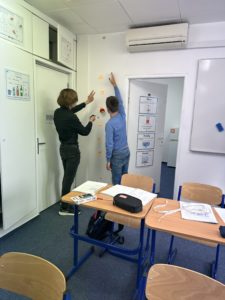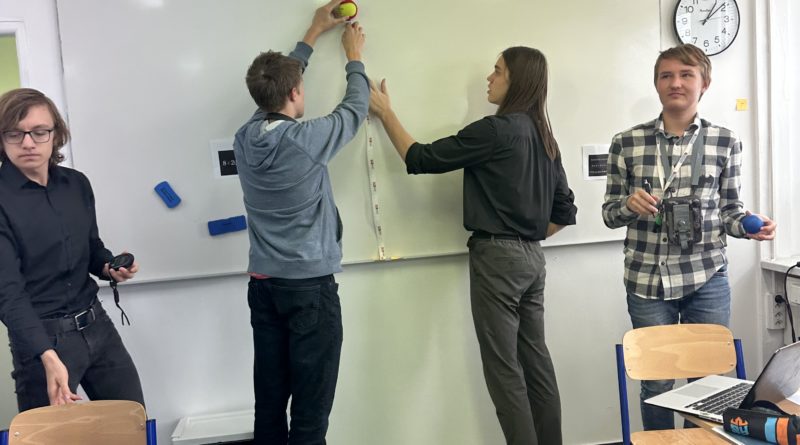Free Fall and Uncertainties Laboratory in MYP Physics
The MYP 4-5 Physics students recently engaged in an exciting free fall and uncertainties laboratory, allowing them to experience science in a more dynamic, hands-on way. This experiment brought their learning to life, as they explored the concepts of motion and uncertainties through practical application. The students’ enthusiasm and excitement were evident as they conducted this classic physics experiment, bringing them to a new level of understanding and appreciation for the subject.

In the experiment, students dropped a ball from an initial height of 2 meters, gradually reducing the height in increments of about 25 centimeters. They measured the time it took for the ball to hit the ground, repeating the process three times for each height to ensure accurate data collection. Using this data, they were able to calculate the velocity of the falling ball and analyze how it changed depending on the height.

This lab went beyond simply calculating velocity; students were introduced to the concept of uncertainties and how they play a crucial role in scientific measurements. They learned to interpret variables, analyze their results, and incorporate uncertainties into their calculations, which is an essential skill in any scientific investigation.

Through this hands-on activity, the students also gained valuable experience in writing scientific reports, honing their ability to present data and apply statistical analyses. This exercise challenged them to think critically, interpret their results with precision, and connect their findings to broader scientific principles.
The energy in the classroom was palpable as students worked together, problem-solving and learning in real-time. The joy of discovering science through experimentation allowed them to appreciate the subject beyond the theoretical, making it relevant and engaging. This lab not only deepened their understanding of physics concepts but also equipped them with essential skills that will benefit them in future scientific endeavors.


